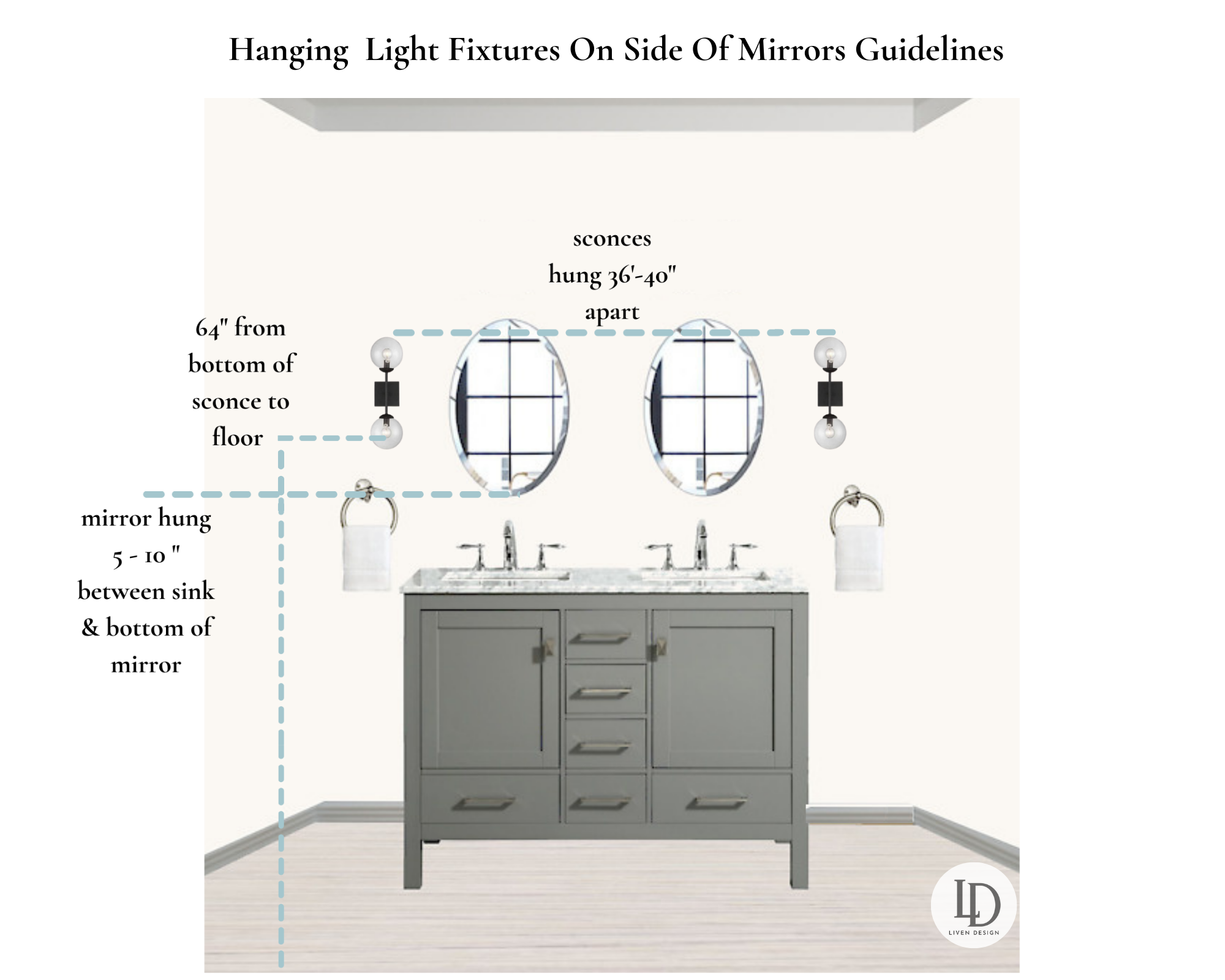Vanity Mirror Height Considerations

The optimal height of a bathroom vanity mirror is crucial for both functionality and aesthetics. It should allow users to comfortably see their reflection without straining their neck or shoulders. Determining the ideal mirror height depends on several factors, including the user’s height, the vanity’s height, and the intended use of the mirror.
Relationship Between Mirror Height and User Height
The mirror’s height should be proportionate to the user’s height to ensure optimal viewing. As a general rule, the top of the mirror should be approximately eye level when the user is standing upright in front of the vanity. This allows the user to see their entire face and head clearly without having to tilt their head up or down.
Measuring the Appropriate Mirror Height, Bathroom vanity mirror height
To determine the appropriate mirror height for a particular user, measure the distance from the floor to the user’s eyes. This measurement should be taken while the user is standing upright in front of the vanity. Add approximately 2 inches to this measurement to account for the height of the vanity countertop. The resulting measurement represents the ideal height for the top of the mirror.
Types of Bathroom Vanity Mirrors: Bathroom Vanity Mirror Height

Bathroom vanity mirror height – Vanity mirrors play a crucial role in enhancing the functionality and aesthetics of your bathroom. They come in various types, each with unique features and benefits.
Understanding the different types of bathroom vanity mirrors will help you make an informed decision that complements your bathroom’s style and meets your needs.
Framed Mirrors
- Framed mirrors feature a decorative frame that surrounds the mirror’s edge, adding a touch of elegance and sophistication to your bathroom.
- The frame material can range from wood, metal, or plastic, allowing you to match it with your bathroom’s overall design.
- Framed mirrors are a popular choice for traditional and classic bathroom styles.
Frameless Mirrors
- Frameless mirrors offer a sleek and modern look, creating an illusion of a larger space in your bathroom.
- They are often used in contemporary and minimalist bathroom designs, where clean lines and simplicity are emphasized.
- Frameless mirrors can be mounted on the wall or recessed into the wall for a seamless integration.
Backlit Mirrors
- Backlit mirrors incorporate LED lights behind the mirror’s surface, providing ambient lighting in your bathroom.
- They eliminate shadows and create a more evenly lit space, making them ideal for applying makeup or shaving.
- Backlit mirrors add a touch of luxury and sophistication to your bathroom, enhancing its overall ambiance.
Lighted Mirrors
- Lighted mirrors feature built-in lights around the mirror’s perimeter, providing direct illumination for your face.
- They are particularly useful for tasks that require precise lighting, such as applying makeup or plucking eyebrows.
- Lighted mirrors are a practical choice for bathrooms with limited natural light or small spaces.
Mirror Placement and Lighting

Proper mirror placement is crucial for optimal lighting in the bathroom. The mirror should be positioned so that it reflects natural light from a window or artificial light from overhead fixtures.
There are various lighting options available for bathroom vanity mirrors. Incandescent bulbs provide warm, flattering light, while fluorescent bulbs offer brighter, more diffused light. LED bulbs are energy-efficient and provide a long lifespan.
Lighting Tips
- Use a combination of natural and artificial light to create a well-lit mirror area.
- Place the mirror opposite a window to take advantage of natural light.
- Install overhead fixtures that provide bright, even illumination.
- Consider using sconces on either side of the mirror for additional lighting.
- Use dimmable lighting to adjust the brightness as needed.